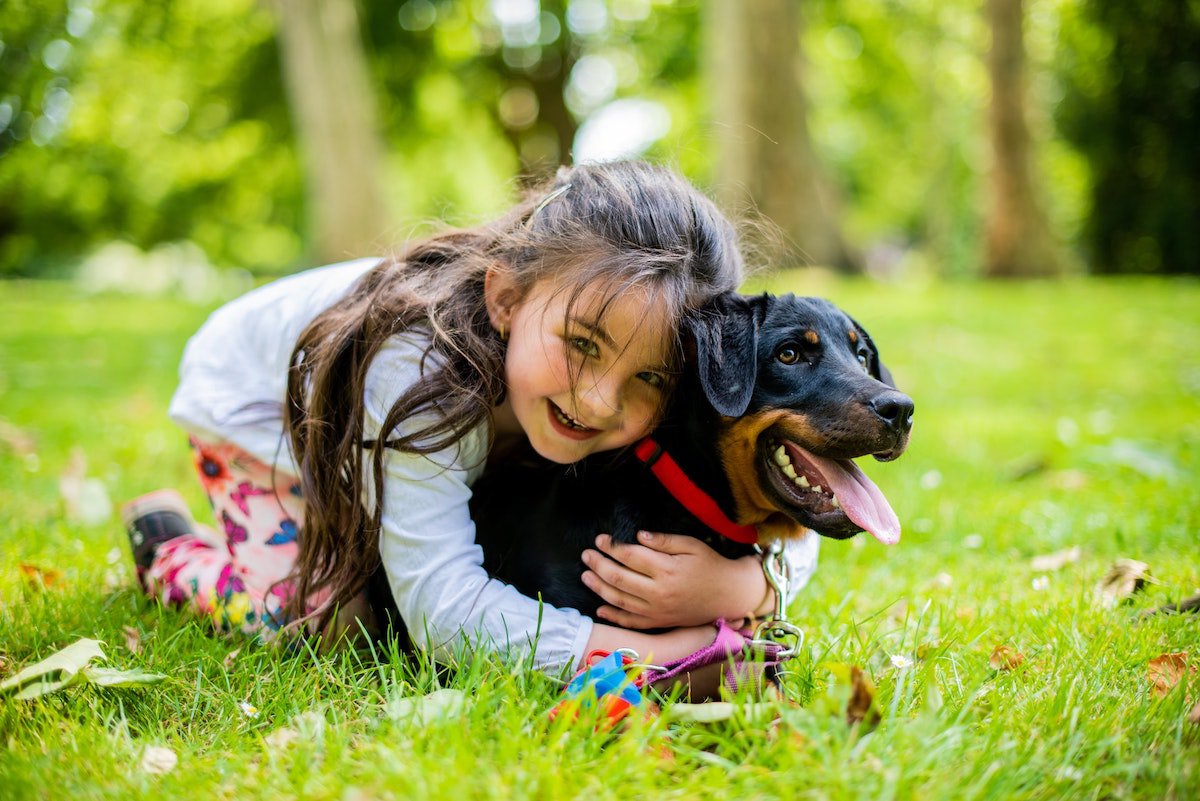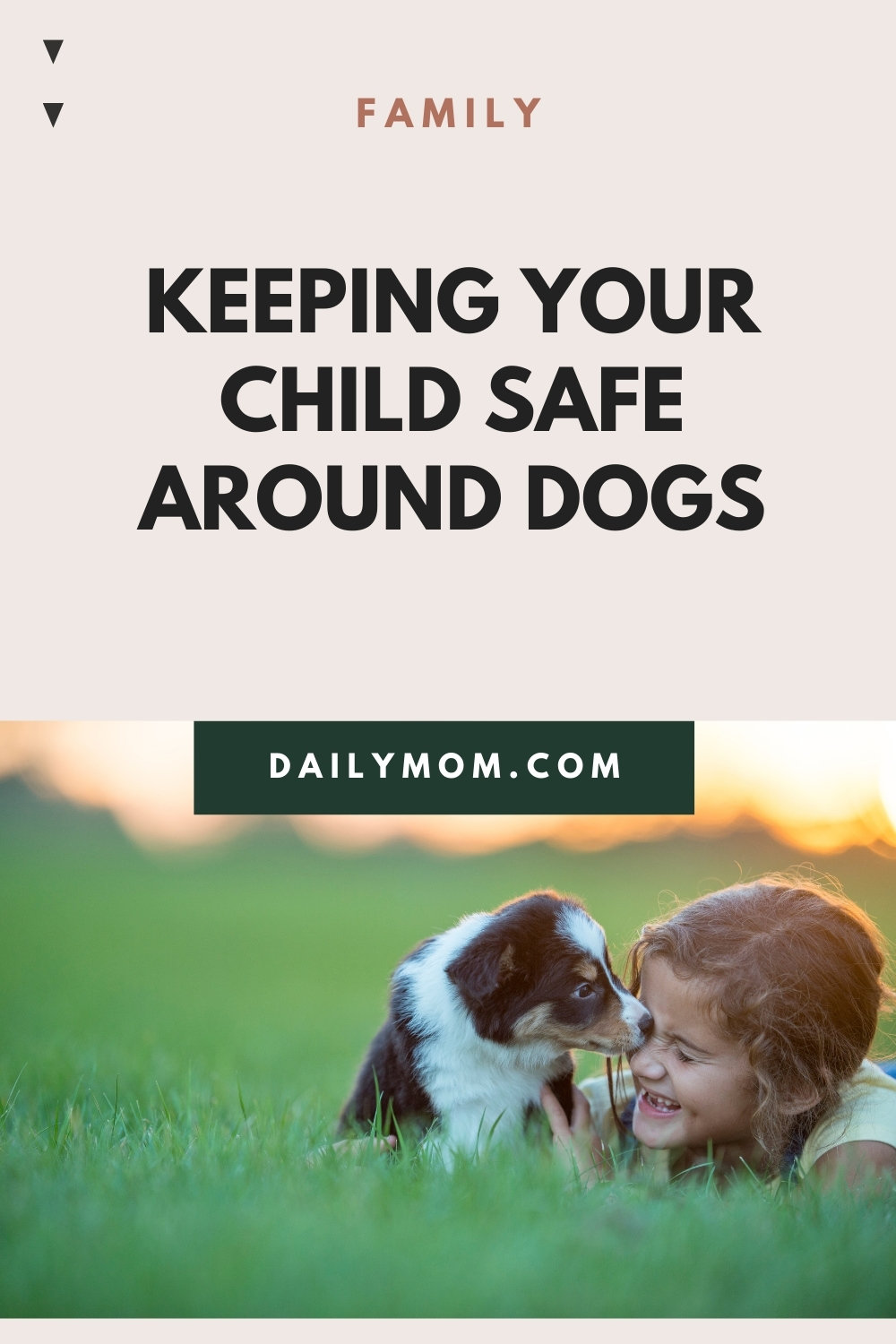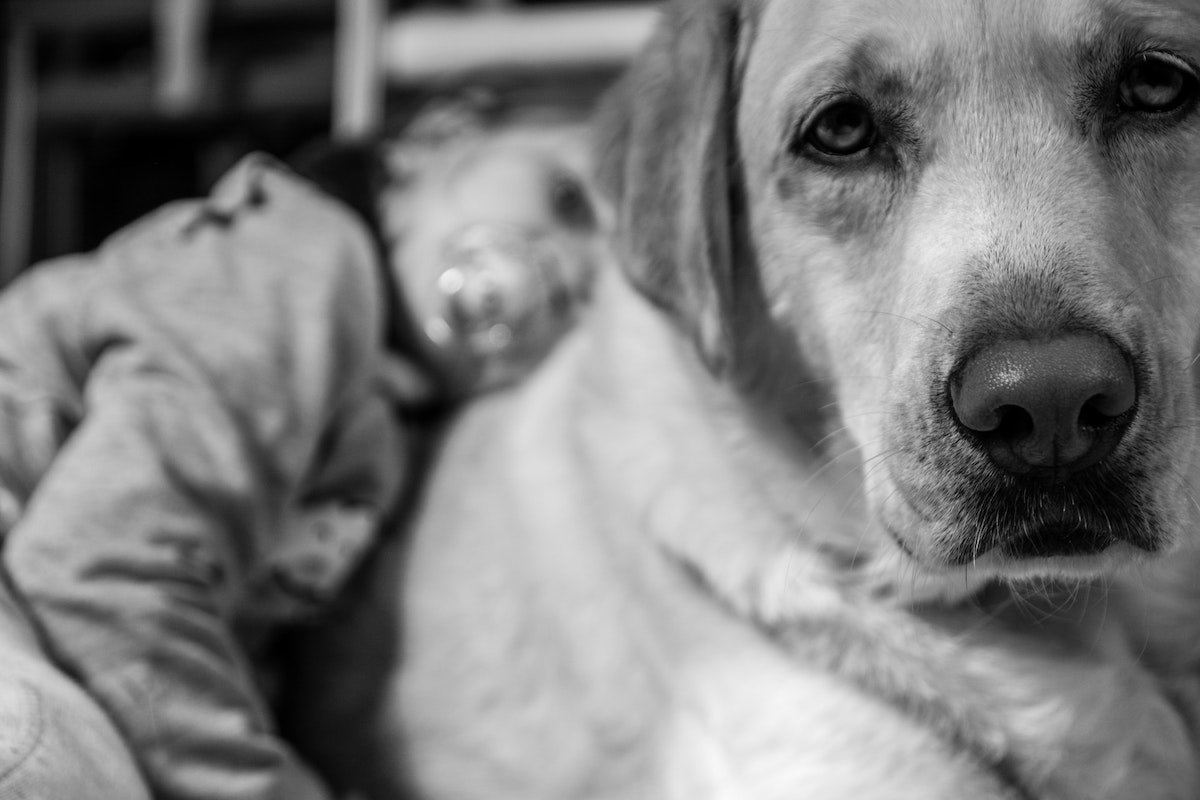When it comes to our children, our main priority is keeping our little ones safe. Safe at home, safe in public, and teaching them awareness to recognize unsafe situations. Whether you own a dog or not, it may be a matter of time until your child crosses paths with one. It is critical to educate our kids about dog safety.
According to the 2022 pet owners survey, roughly 69 million households in the US own a minimum of one dog. It’s no surprise that dogs offer a lot of benefits to children. Luckily, in most cases, no issues occur, but that doesn’t mean it’s not important for us to teach our kids how to approach a dog and to learn their boundaries when it comes to the dogs they encounter. Like us, dogs have limits too and occasionally need their space. Kids need to learn dog safety tips to avoid any harmful situations.
There has been a campaign called “stop the 77”, which is based on statistics that show 77% of dogs that do end up biting a child, are from their pet dog. Dogs can generally read our emotions, our likes, and dislikes, but sometimes kids are not aware of how to read theirs. That 77% of dog bites can be changed if your child knows how to behave around dogs. Dog safety success is all about education.
Never grab their tail

It may come as a surprise for some people, but dogs use their tails as a counterbalance with various maneuvers such as running, jumping, and negotiating tight quarters. Their tails are supported by muscles, and tendons and can consist of up to 23 vertebras, depending on the shape, size, and breed. Regardless of the type, a dog’s tail plays a vital role in how they communicate and interact in the world providing insight into how a dog may feel happy, scared, curious, or sad.
Kids are usually so tempted to grab a dog’s tail as it moves fluidly in various positions. Kids, of course, look at it as playing, but they need to know that grabbing a dog’s tail is painful for them and can potentially cause permanent damage as it forms part of their backbone and spine. Tail grabbing can be intrusive to dogs leading them to become defensive and possibly aggressive. Kids need to understand grabbing the tail is completely off-limits to avoid a terrible situation.
Leave a dog alone when eating
Teaching your child to avoid a dog when eating is the easiest way to avoid conflict. Kids must understand that when dogs eat, they need their space. Dogs may feel pressure when people, especially toddlers, are nearby as they eat keeping them on guard to protect their food and finish what is in their bowl. If possible, keep your dog from young children when eating to ensure their safety.
We all know dogs also need to be trained as well when it comes to this, but we are better off focusing on our children in this situation to make the biggest impact on avoiding conflict. Once kids respect this, they will also apply this knowledge to other dogs when they see them eating. Parents typically try re-directing their kids during dog mealtime, while teaching and explaining to them that dogs must be left alone when eating.
Read More: What’s Really Going On In Your Dog’s Head?
Do Not Disturb a Dog When Sleeping

It is best to teach our kids to never disturb a dog when sleeping. Like humans, dogs have a startle reflex in their brain, which can be a good thing, as it protects us from danger. However, with our pet dogs, it can be unsettling to find out how your dog or other dogs may react when your child approaches them in a deep sleep.
The startle reflex is often tested with traditional temperament testing from dog breeders. Some dogs will jump, flinch, run and hide while others may lash out by biting. The ones that do lash out, do not intend to be aggressive, but that’s usually how it is characterized. It’s simply an instinctive reaction from a dog.
We are put to ease when we feel confident that our pet dogs will not react by biting, but even then, kids should still be taught to never abruptly wake up a dog as it can lead to serious consequences; especially with dogs, they are not very familiar with. It is helpful to teach our kids to understand that dogs also have dreams, and if they’re suddenly woken up, they could bite if they were having a nightmare at that time.
A great dog safety rule is teaching our kids to call a dog by their name from a short distance away, giving them a minute to process they are not in danger and that they are simply being called for love and attention.
Never Blow in a Dog’s Face
This is one of the most common reasons a child gets bitten.
Dogs generally are happy-go-lucky creatures that can bring joy everywhere they go. There are some things that can be amusing to humans, but be quite irritating to a dog, and blowing in their face is one of them. Most people, especially kids, find it entertaining to see a dog’s reaction when blowing air at their face.
One of the main reasons dogs don’t like being blown in the face is that you are simply too close for their liking, and it requires staring directly at their face. It confuses them and may provoke a dog to immediately become defensive, catching them off guard and in turn, biting at your face.
Signs of a dog showing distress can include
- Yawning
- Licking its lips
- Turning their head
- Panting
- Whining or barking
Occasionally, you may come across a dog that doesn’t mind being blown in the face, but for the safety of our little ones, it’s best to teach them to never do this to a dog since the majority of them do not like it. The last thing we need is our little loved ones at risk of being bitten in the face.
Always Ask for Permission to Pet Someone’s Dog

As we grow up, we learn to keep our hands to ourselves, which is something that we follow forever. This is also something kids need to be taught when approaching a dog. Certainly, most dogs love to be petted and seek for attention, but not every dog likes to be touched, particularly along the spine or tail.
Kids need to remember, and understand, that dogs are not public property; before reaching their hands out, kids must learn to ask for permission from the dog’s owner. This will give you and your little one a safe approach in case they cross paths with a sensitive or easily aggravated dog.
Teach your child to crouch down and allow a dog to come to you by talking to them softly. If the dog approaches, that will tell your little one they are okay with their interaction. It is recommended to begin petting under their chin, along the side of their chest for a few seconds. If the dog leans in, that’ll show your child it is safe to keep petting.
Make them aware to stop petting if a dog turns away or stiffens up, kids need to be mindful of a dog’s body language, which will keep them out of harm’s way, by knowing when to give a dog space.
Do Not Approach a Dog When Off a Leash
Teaching your kids to not chase or approach a dog when off a leash is vital, no two dogs are alike, some may want to play, while others may show signs of aggression. There is no way of knowing if an aggressive dog is the one that approaches you, so the best thing we can do is teach our little ones to simply ignore them and walk away.
Dogs off leashes are typically on high alert and more reactive to their surroundings, making them more defensive as someone approaches them.
Although, we know this will be challenging for kids because it may draw some excitement when seeing a dog run wild around them that they are not familiar with. Kids need to be educated about the repercussions if they were to cross paths with an aggressive dog. This is where educating your kids about dog safety is key, not so much to scare them, but to make them aware of the potential harm it could cause them, the friends they may have around them, or even their own dog if they are nearby.
Read More: Best Dogs for Kids
Be a Tree Technique
All kids should know the technique of standing still, like a tree if they ever do encounter an aggressive dog on the loose. Instruct your kids to stand still with arms tucked at their sides and hands folded in front of them while looking down. This has been known to be the safest posture for kids because they are not doing anything to make a dog feel threatened, alarming the dog by making eye contact or triggering the dog’s chase response with any sort of movements.
It’s best to practice this posture with a friendly dog, if possible until it seems to come effortlessly to your child. Once your child knows this technique and other dog safety rules involving how to behave around other dogs, you will feel more confident and safer when your child encounters any dog at any place.
Be Gentle, No Tight Squeezing

Read More: Finding A Family Pet: Animals That Are A Great Fit And Ones To Avoid
Unfortunately, we cannot rely on people to train their dogs to behave around children. In order to prevent injury, it is a better option for us to focus on teaching our kids about dog safety. A lot of dogs are afraid around children due to their rough touches, inconsistent voices, screaming, and erratic movements. This alone can cause a dog to become defensive potentially harming a child if they become too close, hug or squeeze them too tight.
Children need to be taught that dogs are not toys; dog safety includes no tail pulling, poking eyes, stepping or jumping on them, grabbing fur, riding a dog, etc. All of these can cause discomfort or pain to a dog, and even the nicest calmest dog will have limits to what they can tolerate. Their last resort may consist of growling, snapping, nipping, or biting a child.
Rules That Need To Be Taught
- Do not grab or pull on their tail
- Do not pull-on ears
- Do not poke at the dog’s eyes
- Do not stomp on a dog’s paws
- Do not jump or bounce on a dog
- Do not hit or kick a dog
- Do not grab and pull on the dog’s fur
- Do not attempt to ride the dog
If your child can follow these dog safety tips, their risk of harm will significantly decrease. Dog safety teaches them boundaries and to respect animals. Dogs cannot communicate verbally, we must enforce our children to understand that dogs have limits and will react if they are in pain, feel threatened, or are afraid.
Communicating with dogs can be tricky at times since each dog is different, has a different history, and altered temperaments. If we can teach our kids to be cautious, and educate them about recognizing dogs’ body language while knowing their own boundaries, we can keep them safe and reduce that 77% statistic of pet-owned dogs harming our children.
: 8 Dog Safety Rules Kids Should FollowWANT TO READ MORE?
Want to find the best-temperament dogs for families? Read about The Best Family Dogs and What to Know Before You Buy.
CONNECT WITH DAILY MOM
💖 NEWSLETTER: DAILY READS IN YOUR INBOX 💖
Sign up to receive our picks for the best things to do, see and buy so you can relax and focus on more important tasks! Let us help you be the best version of yourself you can be!
BE SOCIAL WITH US
📌 LOVE IT? PIN IT!📌











































